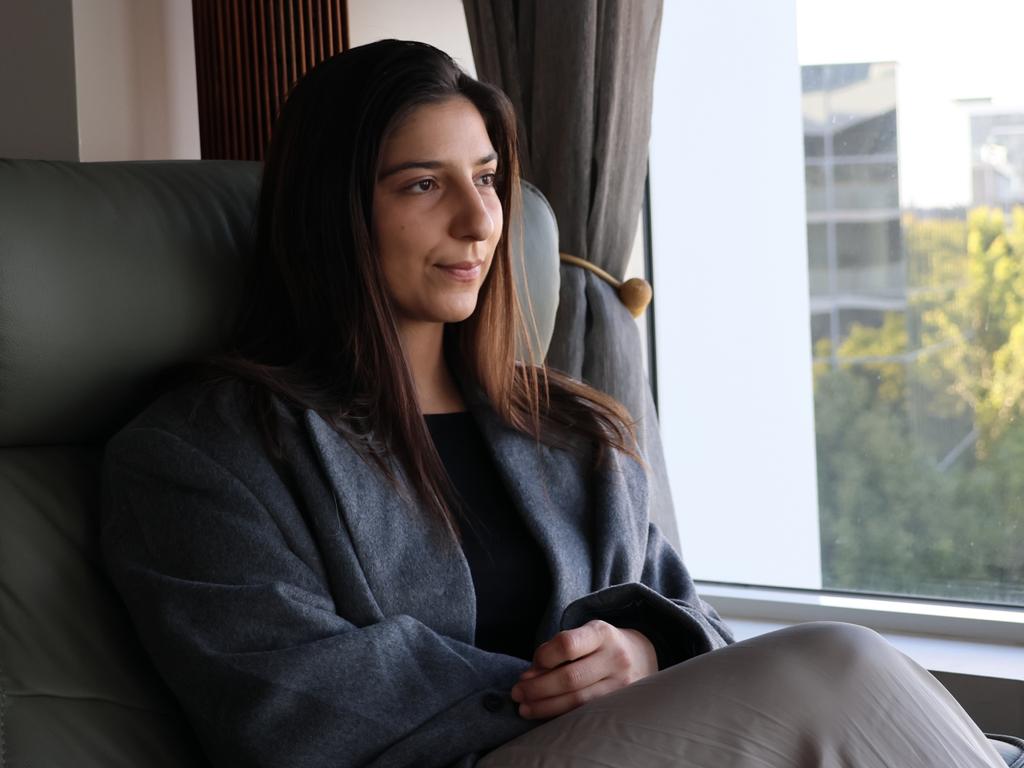Art, internships open biomedicine to visually impaired
Few scientists would see the value of an artist in residence, but for Jamie Rossjohn it changed his lab.

What began as a gallery for the visually impaired has become a trailblazer in science communication and fair employment.
Monash University’s Sensory Science program is a staple of the university’s biology and science faculties, emerging from a 2018 Sensory Science exhibition and biomedicine disability internship.
But before that, it was a conversation between Monash professor Jamie Rossjohn and his assistant Sabrina Constantin, who has a vision impairment.
In an effort to better communicate the science pioneered by Monash biomedicine, Ms Constantin suggested the faculty hire an artist in residence who could explain infection and immunity to the vision impaired.
Soon after, artist Erica Tandori was driving the university towards its first exhibition. Dr Tandori has a PhD in visual art and ophthalmology, and is a classically trained oil painter.
Professor Rossjohn and Dr Tandori have spent seven years collaborating on dozens of artworks across different forms to portray cell structures, chemical processes, cancers and more.
At 23, Dr Tandori had to reconfigure her life and art after developing juvenile macular degeneration and losing the majority of her vision, later using oil painting to portray vision loss from a patient’s point of view.
“I really do believe that we may be on to something with multisensory communication,” Dr Tandori said.
“People explore and experience the world in different ways, so it’s a way to make the world come alive.
“This can be a beautiful base level from which to recreate and improve the world around us.”
Alongside the Sensory Science gallery, Professor Rossjohn has been operating an internship program for the past seven years.
The lab position consults with interns and service providers to accommodate a broader range of workers and give them employment experience that has historically been inaccessible.
“As a scientist, I’ve had a lot of opportunities come my way and I reflected on whether those opportunities would have arisen if I had a disability … the answer was no,” Professor Rossjohn said.
“I realised as an employer of a lab for twenty years, I never went and actively employed people with known disabilities, so the ball was in my court.”
The Australian Institute of Health and Welfare estimates that 48 per cent of working age Australians with a disability are employed, compared to the average of 80 per cent among those without disability.

“When I started this program, there was a young man who had a degree in the sciences, but the only job that he could get was cleaning a fast food chain in the middle of the night,” Professor Rossjohn said.
“He was prepared to come to my lab to work for free, travelling two hours each way on public transport. Obviously I wasn’t going to accept him working for free, so I paid him a scholarship.
“Because of the experience in the lab, he was then able to secure employment somewhere else … that experience changed his life course.”
The dual projects were featured in the prestigious journal Cell on Thursday in an effort to drive similar programs at other workplaces.
“There’s only so much that one person in one lab can do, right? I just hope that other researchers and other institutions take a look at this,” Professor Rossjohn said.
“This is already beginning to happen. I feel as if the pebble has been thrown in the water and the ripples are emerging.
“If I can get this to work in a lab environment, then there’s no reason why other sectors or institutions can’t get it working.”
Since the 2018 Monash Sensory Science launch, similar exhibitions have been held at the University of New South Wales and Cambridge.
“The first exhibition that we did was in 2018 was the most instantaneously gratifying day in science I’ve ever had,” Professor Rossjohn said.
“As a medical researcher you want some of your discoveries to lead towards the betterment of human health and the human condition, but that can take 20 to 30 years to materialise.
“To train a workforce that’s more creative and inclusive, I think that can help accelerate such discoveries, because great ideas can come from anywhere.”







To join the conversation, please log in. Don't have an account? Register
Join the conversation, you are commenting as Logout